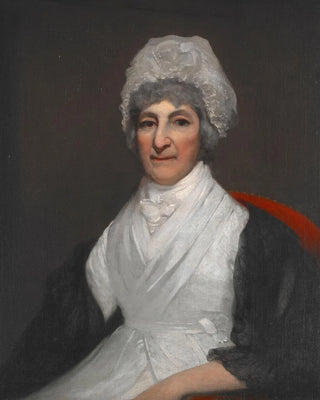Art print | Portrait of Anne Dix Heineker - Sir Henry Raeburn


View from behind

Frame (optional)
Sir Henry Raeburn’s "Portrait of Anne Dix Heineker" is an iconic artwork that embodies the very essence of 18th-century British portraiture. This painting, both delicate and powerful, invites us to delve into the intimacy of an era where art served as a mirror to society. Gazing at this art print, one is immediately struck by the finesse of the model’s features and the depth of emotion conveyed. Raeburn, with his unparalleled talent, succeeds in capturing not only the appearance of his subject but also her essence, creating a timeless connection between the viewer and the artwork.
Style and uniqueness of the piece
The uniqueness of the portrait lies in how Raeburn plays with light and shadow, creating an atmosphere that is both warm and mysterious. The colors, subtly chosen, evoke a palette of natural tones that enhance the beauty of the female figure. Every detail, from the fabric of the dress to the reflections in the hair, demonstrates remarkable meticulousness. Raeburn stands out for his ability to bring his subjects to life, making them almost tangible. This art print does not merely depict a woman; it tells a story, that of Anne Dix Heineker, whose gaze seems to carry the weight of centuries. The composition, both classic and innovative, reflects a perfect balance between tradition and modernity, making this work a true masterpiece of portraiture.
The artist and his influence
Sir Henry Raeburn, a central figure in Scottish portraiture, managed to leave a mark on his era through his unique approach to painting. Born in Edinburgh, he captured the spirit of his time by combining traditional techniques with a personal vision. His influence extends far beyond Scotland’s borders, inspiring many artists across Europe. Raeburn integrated elements of neoclassicism while cultivating a romantic sensibility, which allowed him to create portraits that transcend mere stylistic exercise. His work is not only a testament to his talent but also a reflection of the aspirations and values of his society. Through

Matte finish

View from behind

Frame (optional)
Sir Henry Raeburn’s "Portrait of Anne Dix Heineker" is an iconic artwork that embodies the very essence of 18th-century British portraiture. This painting, both delicate and powerful, invites us to delve into the intimacy of an era where art served as a mirror to society. Gazing at this art print, one is immediately struck by the finesse of the model’s features and the depth of emotion conveyed. Raeburn, with his unparalleled talent, succeeds in capturing not only the appearance of his subject but also her essence, creating a timeless connection between the viewer and the artwork.
Style and uniqueness of the piece
The uniqueness of the portrait lies in how Raeburn plays with light and shadow, creating an atmosphere that is both warm and mysterious. The colors, subtly chosen, evoke a palette of natural tones that enhance the beauty of the female figure. Every detail, from the fabric of the dress to the reflections in the hair, demonstrates remarkable meticulousness. Raeburn stands out for his ability to bring his subjects to life, making them almost tangible. This art print does not merely depict a woman; it tells a story, that of Anne Dix Heineker, whose gaze seems to carry the weight of centuries. The composition, both classic and innovative, reflects a perfect balance between tradition and modernity, making this work a true masterpiece of portraiture.
The artist and his influence
Sir Henry Raeburn, a central figure in Scottish portraiture, managed to leave a mark on his era through his unique approach to painting. Born in Edinburgh, he captured the spirit of his time by combining traditional techniques with a personal vision. His influence extends far beyond Scotland’s borders, inspiring many artists across Europe. Raeburn integrated elements of neoclassicism while cultivating a romantic sensibility, which allowed him to create portraits that transcend mere stylistic exercise. His work is not only a testament to his talent but also a reflection of the aspirations and values of his society. Through






